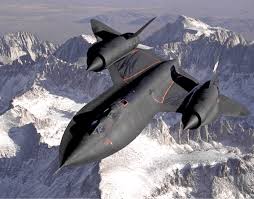 The United States Air Force SR-71 Blackbird reconnaissance plane (aka The Sled) is long retired but still holds the world speed record for a fixed-wing aircraft. Officially, it’s rated at Mach 3.3 but Blackbird pilots hint that it went faster. A lot faster. Major Brian Shul shares from his book Sled Driver what it’s like to fly a Blackbird and proudly proclaim over the airwaves that you’re the King of Speed. Whether you’re a fast-jet buff or not, Brian’s excerpt from Sled Driver will make you laugh and leave you proud.
The United States Air Force SR-71 Blackbird reconnaissance plane (aka The Sled) is long retired but still holds the world speed record for a fixed-wing aircraft. Officially, it’s rated at Mach 3.3 but Blackbird pilots hint that it went faster. A lot faster. Major Brian Shul shares from his book Sled Driver what it’s like to fly a Blackbird and proudly proclaim over the airwaves that you’re the King of Speed. Whether you’re a fast-jet buff or not, Brian’s excerpt from Sled Driver will make you laugh and leave you proud.
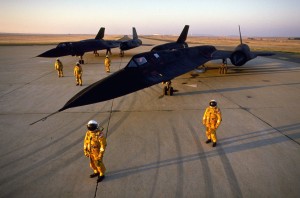 “In 1962, the first SR-71 Blackbird successfully flew, and in 1966, the same year I graduated from high school, the United States Air Force began flying operational SR-71 missions. I came to the program in 1983 with a sterling record and a recommendation from my commander, completing the weeklong interview and meeting Walter Watson, my partner for the next four years He’d ride four feet behind me, working all the cameras, radios, and electronic jamming equipment. I joked that if we were ever captured, he was the spy and I was just the driver. He told me “Just keep the pointy end forward.”
“In 1962, the first SR-71 Blackbird successfully flew, and in 1966, the same year I graduated from high school, the United States Air Force began flying operational SR-71 missions. I came to the program in 1983 with a sterling record and a recommendation from my commander, completing the weeklong interview and meeting Walter Watson, my partner for the next four years He’d ride four feet behind me, working all the cameras, radios, and electronic jamming equipment. I joked that if we were ever captured, he was the spy and I was just the driver. He told me “Just keep the pointy end forward.”
We trained for a year, flying out of Beale AFB in California. On a typical training mission, we’d take off near Sacramento, refuel over Nevada, accelerate into Montana, obtain high Mach over Colorado, turn right over New Mexico, speed across the Los Angeles Basin, run up the West Coast, turn right at Seattle, then return to Beale. Total flight time: two hours and 40 minutes.
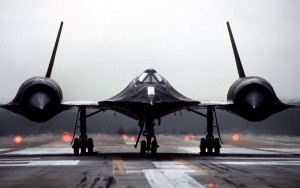 There were a lot of things we couldn’t do in an SR-71, but we were the fastest guys on the block and loved reminding our fellow aviators this. People often asked us if it was fun to fly the jet. Fun wouldn’t be the first word I’d use. Intense maybe. Even cerebral. But there was one day in our Sled experience when I’d have to say that it was pure fun to be the fastest guys out there, at least for a moment.
There were a lot of things we couldn’t do in an SR-71, but we were the fastest guys on the block and loved reminding our fellow aviators this. People often asked us if it was fun to fly the jet. Fun wouldn’t be the first word I’d use. Intense maybe. Even cerebral. But there was one day in our Sled experience when I’d have to say that it was pure fun to be the fastest guys out there, at least for a moment.
It occurred when Walt and I were flying our final training sortie. We needed 100 hours in the jet to complete our training and attain Mission Ready status. Somewhere over Colorado, we passed the century mark. We made a wide turn into Arizona and the jet was performing flawlessly. Ripping across the barren deserts 80,000 feet below us, I could already see the coast of California.
I was beginning to feel a bit sorry for Walt in the back seat. There he was, with no particular good view of the incredible sights before us, tasked with monitoring four different radios. This was good practice for him for when we began flying real missions, when a priority message from headquarters could be vital.
It was difficult for me to relinquish control of the radios, as my during my entire flying career in hi-performance fighters, I controlled my own transmissions. But it was part of division of duties in this plane and I’d adjusted to it. I still insisted in talking on the radio when we were on the ground or on approach, however. Walt was so good at so many things, but he was a navigator, not a pilot, and couldn’t match my expertise at sounding smooth on the radio—a skill that had been sharply honed in fighter squadrons where the slightest radio miscue was grounds for beheading. He understood that and allowed me that luxury. Bt when we were airborne, the radios were his.
 That day, just to get a sense of what Walt had to contend with, I pulled the radio toggle switches and monitored the frequencies along with him. The predominant radio chatter was from Los Angeles Center, far below us, controlling traffic in their sector. While they had us on their scope (albeit briefly), we were at 80,000 feet in uncontrolled airspace and normally would not talk to them unless we needed to descend into their space.
That day, just to get a sense of what Walt had to contend with, I pulled the radio toggle switches and monitored the frequencies along with him. The predominant radio chatter was from Los Angeles Center, far below us, controlling traffic in their sector. While they had us on their scope (albeit briefly), we were at 80,000 feet in uncontrolled airspace and normally would not talk to them unless we needed to descend into their space.
We listened as the shaky voice of a lone Cessna pilot asked Center for a read-out of his ground speed. Center replied “November Charlie 172. I’m showing you at ninety, nine—zero, knots on the ground.”
 Now the thing to understand about Center controllers is that whether they talked to a rookie pilot in a Cessna, or to Air Force One, they always spoke in the exact same, calm, deep, professional tone that made one feel important. I referred to it as the “Houston Center Voice”. I’ve always felt that, after years of watching documentaries on this country’s space program and listening to the calm and distinct voice of the Houston controllers, all other controllers since want to sound like Houston.
Now the thing to understand about Center controllers is that whether they talked to a rookie pilot in a Cessna, or to Air Force One, they always spoke in the exact same, calm, deep, professional tone that made one feel important. I referred to it as the “Houston Center Voice”. I’ve always felt that, after years of watching documentaries on this country’s space program and listening to the calm and distinct voice of the Houston controllers, all other controllers since want to sound like Houston.
And it didn’t matter what sector of the country we’d be flying in, it always seemed it was the same guy talking. Over the years that tone of voice is a comforting sound to pilots everywhere. Conversely, over the years, pilots always wanted to ensure that, when transmitting, they sounded like Chuck Yeager or at least John Wayne.
Better to die than sound bad on the radio.
 Just moments after the Cessna’s inquiry, a Twin Beech piped up on the frequency. In a rather superior tone he asked for his ground speed.
Just moments after the Cessna’s inquiry, a Twin Beech piped up on the frequency. In a rather superior tone he asked for his ground speed.
“I have you at one hundred sixty-five, one—six—five, knots in ground speed.”
Boy I thought That Beechcraft must think he’s really dazzling his Cessna brethren.
 Then, out of the blue, an F-18 Hornet pilot out of Naval Air Station Lemoore, came up on the frequency. You knew right away it was a Navy jet-jock because he sounded cool. Very cool. “Center. Dusty 52. Ground speed check.”
Then, out of the blue, an F-18 Hornet pilot out of Naval Air Station Lemoore, came up on the frequency. You knew right away it was a Navy jet-jock because he sounded cool. Very cool. “Center. Dusty 52. Ground speed check.”
Before Center could reply, I’m thinking Hey, Dusty 52 has a ground speed indicator in that thirty-five million dollar cockpit he’s riding in, so why’s he asking Center for a readout?
Then I got it. Ol’ Dusty here is making sure every bug smasher from Mount Whitney to the Mojave knows he’s the fastest dude in the valley and wants everyone to know just how much fun he’s having in his brand new Hornet.
 And the reply—always that same, calm, clear voice “Dusty 52, Center. We have you at six hundred and twenty, six—two—zero, knots on the ground.”
And the reply—always that same, calm, clear voice “Dusty 52, Center. We have you at six hundred and twenty, six—two—zero, knots on the ground.”
And I thought to myself Man, is this a ripe situation, or what? As my hand instinctively reached for the mic button, I had to remind myself that Walt, behind me, was in control of the radios. Still, it must be done. In mere seconds we’ll be out of this sector and the opportunity will be lost forever. That Hornet must die, and it must die now.
I thought about all our Sim training and how important it was that we developed well as a crew and knew that to jump on the radio now would destroy the integrity of all we’d worked toward becoming. I was torn. Thirteen miles above the desert, a Sled pilot screamed inside his space helmet.
Then I heard it.
 The click of the mic button from the back seat.
The click of the mic button from the back seat.
The moment Walt and I became crew.
Very professionally—with no emotion—Walt spoke. “Los Angeles Center. Aspen 20. Can you give us a ground speed check?”
There was no hesitation. The reply came as if it were an everyday request. “Aspen 20. I show you at one thousand, eight hundred and forty-two, one—eight—four—two, knots across the ground.”
I think it was the forty-two knots that I liked the best, so accurate and so proud was Center to deliver that information without hesitation, and you knew that controller was just a-smiling, ramming it up that Hornet’s ass.
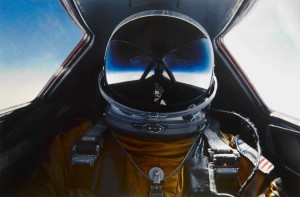 But the precise point I knew Walt and I would be life-long friends was when he keyed the mic again, saying in his most fighter-pilot-like voice “Ah, Center, much thanks. We’re showin’ closer to nineteen hundred on the money.”
But the precise point I knew Walt and I would be life-long friends was when he keyed the mic again, saying in his most fighter-pilot-like voice “Ah, Center, much thanks. We’re showin’ closer to nineteen hundred on the money.”
For a moment, Walter Watson was a god. We finally heard a little crack in the armor of the Houston Center voice when LA came back with “Roger that Aspen. Your equipment is probably a little more accurate and sophistocated than ours. You Blackbird boys have a good one.”
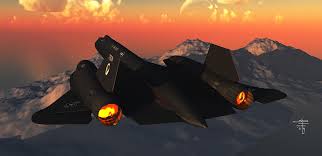 It lasted just a few moments, but in that short, memorable sprint across the southwest, the Navy had been flamed, all mortals on the freq were forced to bow before the King of Speed and, more importantly, Walt and I crossed the threshold of being a crew. A fine day’s work. We didn’t hear another peep on that frequency during the next nine minutes it took us to reach the Pacific coast,
It lasted just a few moments, but in that short, memorable sprint across the southwest, the Navy had been flamed, all mortals on the freq were forced to bow before the King of Speed and, more importantly, Walt and I crossed the threshold of being a crew. A fine day’s work. We didn’t hear another peep on that frequency during the next nine minutes it took us to reach the Pacific coast,
For just one day, it truly was fun being the fastest guys above the planet.
* * *
From Amazon’s Sales Page
No aircraft ever captured the curiosity & fascination of the public like the SR-71 Blackbird. Nicknamed “The Sled” by those few who flew it, the aircraft was shrouded in secrecy from its inception. Entering the U.S. Air Force inventory in 1966, the SR-71 was the fastest, highest flying jet aircraft in the world. Now for the first time, a Blackbird pilot shares his unique experience of what it was like to fly this legend of aviation history.
Through the words & photographs of retired Major Brian Shul, we enter the world of the “Sled Driver.” Major Shul gives us insight on all phases of flying, including the humbling experience of simulator training, the physiological stresses of wearing a space suit for long hours, & the intensity & magic of flying 80,000 feet above the Earth’s surface at 2000 miles per hour. “Sled Driver” takes the reader through riveting accounts of the rigors of initial training, the gamut of emotions experienced while flying over hostile territory, & the sheer joy of displaying the jet at some of the world’s largest airshows. Illustrated with rare photographs, seen here for the first time, “Sled Driver” captures the mystique & magnificence of this most unique of all aircraft.



The SR71 is an amazing aircraft. Like you I have touched one. When I lived in England there is an SR71 on display in the American Air Museum at Duxford Airfield. It’s a mighty beast. Great post.
Hi Dave. I just took an online trip around the Duxford museums. Wow! What a collection. Thanks for sharing this.
Awesome story! Always loved the Blackbird. Thanks for sharing!
Thanks for dropping by, Julie. I got to touch a Blackbird once. There’s one on static display on the USS Intrepid – the aircraft carrier museum in New York City – one of only twenty left in existence. It’s way cooler in person than any photo depicts.
Awesome story, Garry! Wow. Incredible. You get more interesting by the day, my friend.
Hey, thanks Sue! This post is a little outside the usual DyingWords writing & forensics stuff but when I found it, I thought it was such a great little story that it had to be shared. Can’t you just hear that radio traffic? The story has been around the aviation world for some time and some people call BS on it. I checked my facts – not only is it in the book but I found a Youtube clip with Brian Shul telling the same story live. Like you always say… check your facts … quote your source. Here’s the Youtube clip – https://www.youtube.com/watch?v=s7EhdaPo5W8